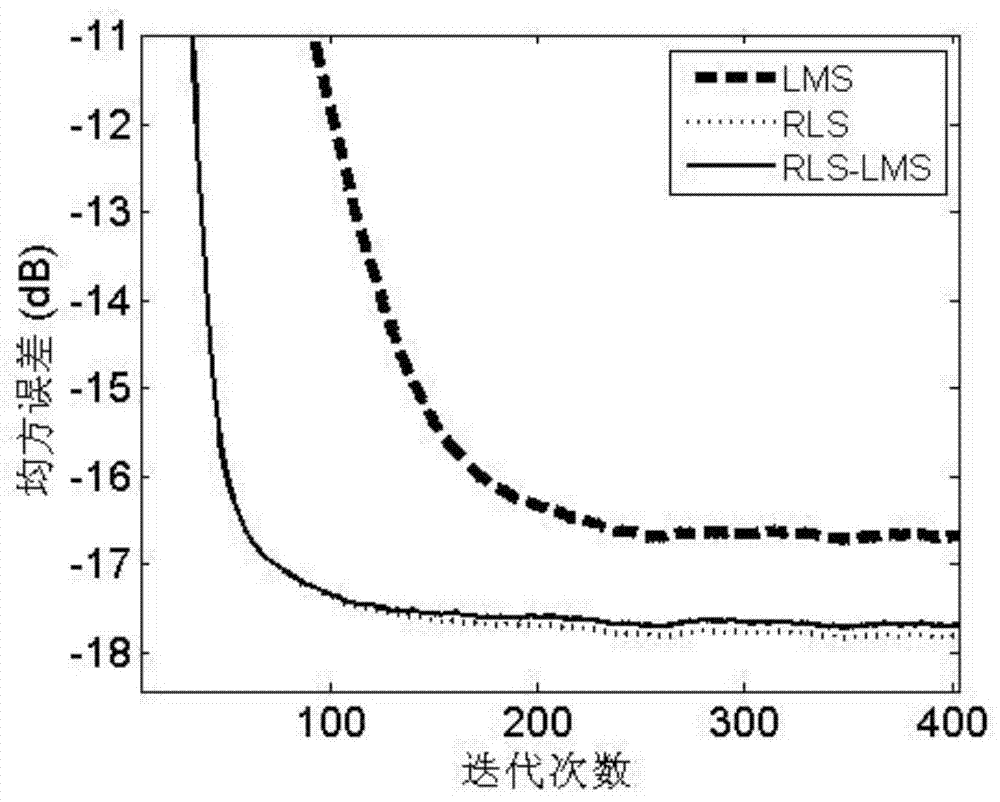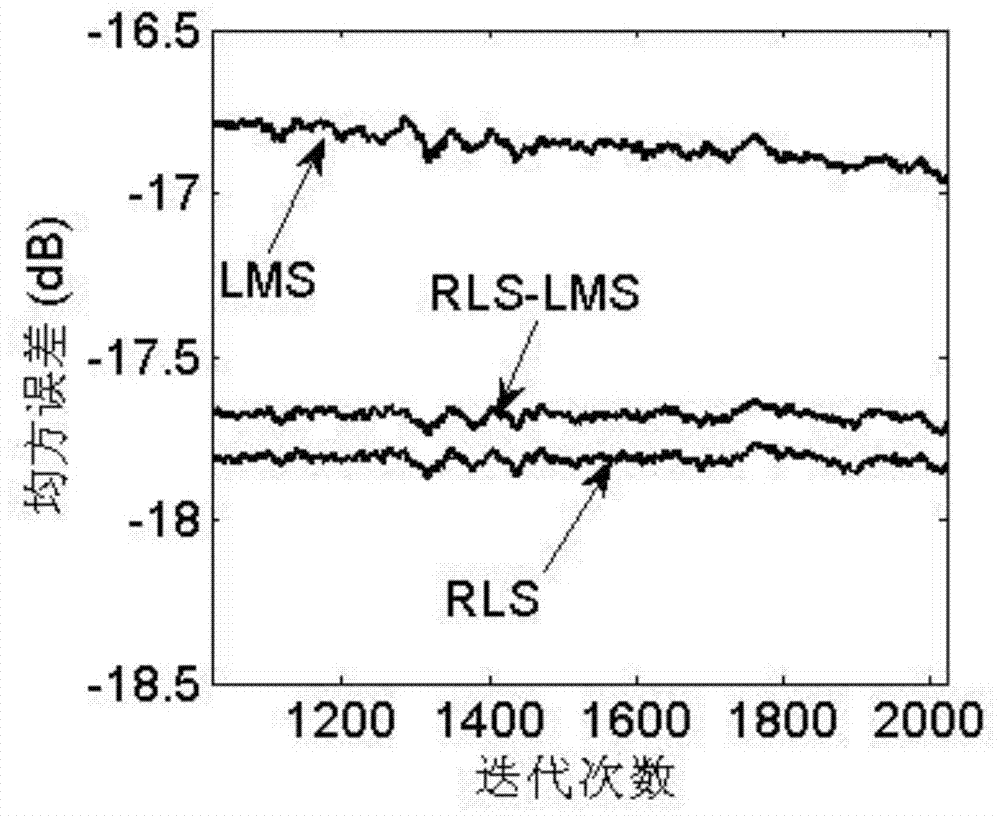Channel equalization method and channel equalizer based on RLS (recursive least square) and LMS (least mean square) combined algorithm
A channel equalizer and channel equalization technology, applied in the field of communication, can solve the problem of high complexity of RLS equalizer
- Summary
- Abstract
- Description
- Claims
- Application Information
AI Technical Summary
Problems solved by technology
Method used
Image
Examples
Embodiment Construction
[0061] The solution of the present invention will be described in detail below in conjunction with the accompanying drawings and specific embodiments.
[0062] figure 1 It is a functional block diagram of the equalizer of the present invention. Combine below figure 1 , the RLS-LMS joint design scheme of the present invention is described in detail:
[0063] Step 1. Use the RLS equalization algorithm on the data to train the equalizer tap coefficients until the equalizer reaches convergence;
[0064] The RLS equalizer has a fast convergence speed, and each convergence point is an optimal point. Therefore, in the equalizer tap training phase, the RLS algorithm needs to be used to achieve convergence as soon as possible. Let the length of the equalizer be N and the coefficient vector be W, then the equalization process is shown in the following formula:
[0065] k = Px λ + x ...
PUM
 Login to View More
Login to View More Abstract
Description
Claims
Application Information
 Login to View More
Login to View More - R&D
- Intellectual Property
- Life Sciences
- Materials
- Tech Scout
- Unparalleled Data Quality
- Higher Quality Content
- 60% Fewer Hallucinations
Browse by: Latest US Patents, China's latest patents, Technical Efficacy Thesaurus, Application Domain, Technology Topic, Popular Technical Reports.
© 2025 PatSnap. All rights reserved.Legal|Privacy policy|Modern Slavery Act Transparency Statement|Sitemap|About US| Contact US: help@patsnap.com



